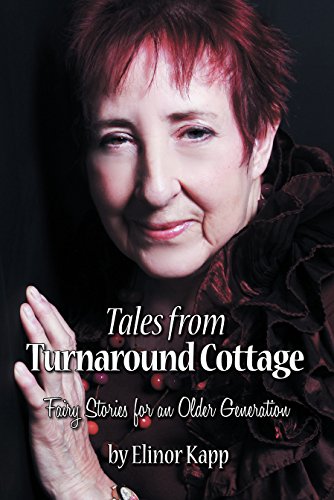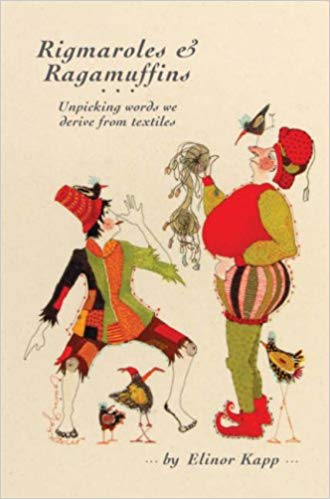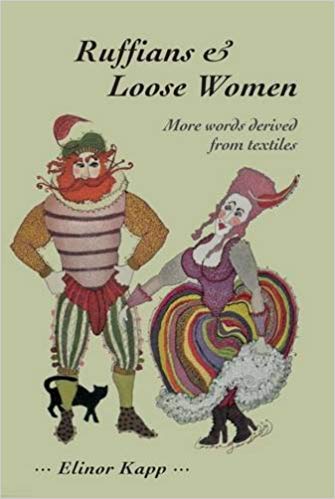Books
Elinor Kapp is a storyteller and writer who has published three books: two on words derived from textiles and a third of original fairy tales for an older generation. Find out more and buy the books for yourself at the links below.

Tales from Turnaround Cottage
This is a book of highly original fairy tales, though drawing on universal themes. The book is set in a magical version of Sussex, a county where anything can – and probably does – happen.
Here the little River Flitter runs down from the High Weald, through Punnetts Town, eventually to join the sea in Seven Sisters Bay. Strange things happen to people who stay in Turnaround Cottage. It is a converted post mill, which has lost its sails. Now it has become a somewhat mysterious bed and breakfast venue, looked after by a newly retired health worker, Helena Brown. And the mice. Don’t ignore the mice – generations of active, chatty, cheese-loving, philosophical mice.
Though the mill’s main purpose is long gone, the winds: north, south, east and west, blow the old place around as if it could still grind corn. Now the winds just love telling stories instead and the place may well have just the tale you need, whether you know it or not. So, come in, come in! Turn the pages and find your own special story.

Rigmaroles & Ragamuffins
The English language has developed over many centuries from many diverse languages and cultures, some now lost. If we want to bring to life something of its impressive history, we might use the metaphor of a great river into which streams and rivulets constantly flow. Alternatively we could liken it to a mighty tree that has grown organically from buried roots, spreading out into a living canopy of innumerable and constantly renewed twigs and leaves.
Elinor Kapp prefers to think of English as a wonderful piece of embroidery, stitched with a multitude of varied threads onto a base of primitive communication. The upper surface dazzles us with its range of colours, tones and textures. But to understand its construction, we need to take a look at the underside of the work. Here we can see the untidiness – the awkward seams, peculiar knots and frayed ends. In places, time has worn away our words to leave threadbare gaps; in others, swathes have been cutaway by changing tastes and trends, allowing flamboyant new threads to be spliced in.
Rigmaroles and Ragamuffins is the result the author’s long involvement with textiles as an embroiderer and her recognition of the therapeutic potential in textile crafts.

Ruffians & Loose Women
This book is a collection of words and phrases for articles that can be made from cloth and thread. The words all have a textile origin, but have gone on to take wing and are used in common speech as metaphors, and in proverbs and rhymes in a figurative sense.
It will appeal to lovers and students of the English language, and particularly to textile enthusiasts, crossword addicts, translators and linguists. It is the sequel to Rigmaroles and Ragamuffins, published in 2007, which collected up words derived from the raw materials to the making of thread and cloth.
Ruffians and Loose Women looks at things that can be made from textiles, from clothing to footwear, from beds and bedding to ships and sails. Many of these words have lost all textile connections, rather like the nouveau riche who concealed their humble origins and pretended to be nobly born. Why would you put a tulip on your head? Who might be entitled to remove your zone? What would it mean to be accused of haberdashery? Get this fascinating book and find out.
